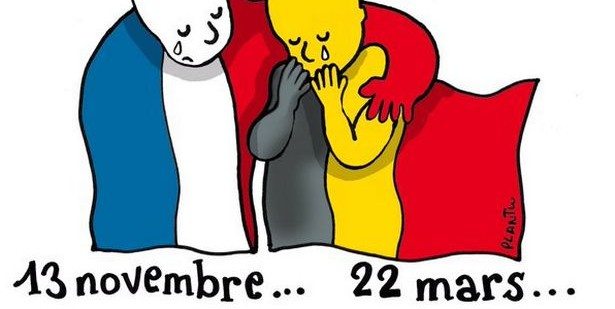Where words fall short: the role of tribute art
After the recent attacks in Brussels, the Internet has seen an outpouring of tribute art. Artists have posted on Twitter using #ArtistsforBelgium in solidarity. The tributes, which have in turn been shared on other social media sites, have expressed feelings of sorrow, outrage and solidarity for Brussels.
A similar flux of artwork in the face of tragedy was seen after the attacks in Paris in 2015. In fact, responding to difficult situations through art is not a recent trend. As Evening Standard writer Susannah Butter points out in an article about the role of cartoons, art was used to communicate during World War One, and has been employed to understand historical moments like the Holocaust.
Art can sometimes express what words cannot.
One may argue that tribute art does not serve a practical purpose during a time of distress; people are likely to turn to news sources for information. However, art can sometimes express what words cannot. News articles can state the facts, but feelings of horror and grief can universally resonate through art.
Sylvain Grand’Maison, a graphic designer who shared a tribute featuring the Belgian cartoon character Tintin, told the Evening Standard: “It’s hard to put things into words and an image brings an emotion words can’t convey. I didn’t want to write anything on Facebook. This is an image to express emotions.” In this respect, tribute art is an effective response in situations where words fall short.
While tribute art is consolatory in nature and expresses condolences to the affected country, it may be essentially personal in nature. It is difficult to say how useful or comforting the tributes have been for those suffering, but art does allow its creator a means to express complex emotions; sharing that work produces a sense of solidarity in opposition to terrorism, for instance.
It has become easy to simply share content without having to think about its original intent.
However, the profundity of that solidarity is dependent on the purpose behind the sharing. With the explosion of social media, it has become easy to simply share content without having to think about its original intent. The immediacy and simplicity of tribute art allows it to be distributed without losing its message, especially as art transcends the limitations of language, but sharing can become a substitute for taking any other action. In situations like this, it may be difficult to actually do much due to constraints such as distance. But when artwork is created, its substance is kept alive by the observer’s engagement with the piece.
Due to the ease of social media sharing, tribute art is in danger of simply becoming a passive way to acknowledge a situation. The artist’s own attempt to confront and understand circumstances through art can get lost if people share just so they can feel they have done something. Consequently, the solidarity generated is a superficial one.
A simple Google search for Paris or Brussels tribute art shows plenty of results, while there is no similar response to the recent attacks in Ankara or Lahore.
Nevertheless, tribute art provides a potential opportunity for people across borders to unite. It has, however, one thing yet to achieve. A simple Google search for Paris or Brussels tribute art shows plenty of results, while there is no similar response to the recent attacks in Ankara or Lahore. Just as the media does not always cover all events equally, tribute art in the wake of tragedy seems to be Eurocentric.
One might be more compelled to react to happenings that are closer, both geographically and in terms of one’s beliefs. But I do not believe that art should be discriminatory when it comes to acts of terrorism that lead to human tragedy. Looking back at the recent events in these countries, art does not seem to be taking advantage of its wide reach and whilst we’re showing solidarity to France and Belgium, we must also ask why certain countries escape our gaze.
To reach its full potential, I believe tribute art must be treated as a starting point instead of a static one.
In general, tribute art provides a point of solidarity accessible to most. However, to reach its full potential, I believe it must be treated as a starting point instead of a static one. When it is appreciated and passed on, a piece of tribute art is just one more picture on the internet. If we add to the artists’ efforts and use their work as a basis for discussion and action, art can be a source of creation in the face of devastation.
Artists have reacted to the tragedies. When it is our turn, surely we can do more than just click ‘share’.

Comments